Ancients - Top 14 Decisive Ancient Battles in the History
3. Battle of Salamis
War was fought for several reasons throughout history. Blood was spattered, kingdoms were destroyed, and people were slaughtered. Some battles played a significant role in history and are memorable. Some battles created new legends that were appreciated for many generations. Some of the efficient military tactics that originated on the ancient battlefields are still followed today. Ancient military commanders like Alexander the Great, Hannibal proved with their brilliant strategies that nothing was impossible on the battlefield.
14. Battle of Platea (479 BC)
Battle Between: Persian and Greek
Greek’s Leaders: General Pausanias and Aristides
Persian’s Leader: Mardonius
Date: August 479 BC
Victory: Greece
Location: Plataea, Greece1
Greek Army: 40,000 men
Persian Army: 70,0001-120,000 men
In the summer of 479 BC, the large Persian force lead by King Xerxes invaded Greece. The Greeks tried to hold the Persian force with 300 Spartiates and 7000 hoplites under the leadership of King Leonidas in a narrow pass. Despite of gallant efforts of Spartan, Persia conquered the Thermopylae and had several victories in Artemisium, Thessaly, Boeotia, Euboea, and Attica. However, they lost the Battle of Salamis. Then Xerxes retreated and returned to Asia with half of his army. He put Mardonius in charge in Boeotia.
The 60,000 hoplites, under the command of Spartan’s King Pausanius, marched towards Boeotia to seek battle with the Persians. The Historic battle took place near Plataea (modern Plataiai) in Boeotia. A huge portion of the Persian army was trapped in the camp and slaughtered. This battle allegedly happened on the same day at the Battle of Mycale and marked the end the invasion started by the Persians.
13. Battle of Thermopylae (480 BC)
Battle Between: Persian and Greek
Greek Leaders: King Leonidas I, Demophilus
Persian Leaders: King Xerxes I of Persia, Mardonius, Hydarnes
Date: 480 BC
Victory: Persian
Location: Thermopylae, Greece
In the summer of 480 BC, an unparalleled Greek force of 7,000 men, led by King Leonidas of Sparta, blocked the outnumbered Persian army at the pass. The Greeks held off the Persians for 7 days with 3 vicious battles, often epitomized as famous last-stand battles in history. Leonidas blocked the road with his force for 2 days; this road being the one and only way for the Persian army to pass. After the continuous two-day battle, Greek resident Ephiatles revealed the secret pass, where the Persian army could enter. Leonidas with his 300 Spartans, and several other Thespians and Thebans died of a glorious death at the pass.
12. Battle of Red Cliffs (208 A.D)
Battle Between: southern warlords Liu Bei and Sun Quan and northern warlord Cao Cao
Southern Leaders: Zhou Yu, Cheng Pu, Liu Bei
Northern Leader: Cao Cao
Date: 208 A.D
Victory: Sun Quan and Liu Bei
Location: Yangtze River China
Southern Warlords Army: 50,000
Northern Warlord Army: 800,000
The Han dynasty ruled China for around four centuries, dividing the kingdom into its Western and Eastern Period. A decisive battle took place in 208 A.D between the two southern warlords, Liu Bei and Sun Quan, and Cao Cao, who had control over the northern part of China. Cao Cao assembled his 800,000 soldiers and attacked his southern rivals swiftly with a mission to unify China.
Southern warlords had altogether 50,000 soldiers, including 30,000 trained naval soldiers led by Zhou. Despite of the low numbers of soldiers, Zhou Yu and Lu Su were able to analyze the disadvantage of Cao’s army. The biggest disadvantage Cao Cao faced was the lack of unstable rear supply, and the fact that many of the soldiers were inexperience in water battles.
Southern warlords had altogether 50,000 soldiers, including 30,000 trained naval soldiers led by Zhou. Despite of the low numbers of soldiers, Zhou Yu and Lu Su were able to analyze the disadvantage of Cao’s army. The biggest disadvantage Cao Cao faced was the lack of unstable rear supply, and the fact that many of the soldiers were inexperience in water battles.
See Also,
11. Battle of the Hydaspes (326 BC)
Battle Between: Macedonian and Hindu Paurava kingdom (Punjab near Bhera)
Greek Leaders: Alexander the Great, Craterus, Coenus, Hephaestion, Ptolemy, Perdiccas, Seleucus, Lysimachus, Demonicus of Pella, Peucestas
Hindu Paurava Leader: King Porus
Date: May 326 BC
Victory: Macedonian
Location: Punjan of Ancient India near the Hydaspes River
Often considered one of the costliest battles of Alexander The Great, the Battle of the Hydaspes River was fought between King Porus of the Hindu Paurava kingdom and Alexander The Great in 315 BC. During this battle Alexander attempted to cross the river during a monsoon, despite the great Indian force waiting for him in the opposite side. The battle was the result of Alexander’s mission to extend his empire towards India. The battle opened a gateway to develop the Greek and Indian cultures that lasted throughout many centuries.
10. Battle of Changping (262 BC- 260 BC)
Battle Between: State of Qin and State of Zhao
State of Zhao Leader: Lian Po, Zhao Kuo
State of Qin Leader: Wang He, Bai Qi
Date: April, 262 BC – July, 260 BC
Victory: State of Qin
Location: Northwest of Gaoping, Shanxi
State of Zhao Army: 450,000
State of Qin Army: 550,000
The Battle of Changping took place during the Warring States period in China between the State of Qin and Sate of Zhao. Qin won the decisive victory. Qin attempted to invade Zhao in 262 BC but was forced back. Zhao, with his 400,000-man force attacked the Qin camp. However, before reaching the camp, Qin’s army ambushed the Zhao force in the mountains. After 46 days without the supplies Zhao finally surrendered.
9 . Battle of Chalons
Battle Between: Roman Empire and Gallic Empire
Roman’s Leader: Aurelian
Gallic’s Leader: Tetricus I
Date: February or March 274
Victory: Roman
Location: Châlons-en-Champagne, France)
The Battle of Chalons was the part of Hunnic Invasions of Gaul, fought between the Roman Emperor Aurelian and Emperor Tetricus I of the Gallic Empire.This battle was remembered for years because of the high death toll. The battle ended the Gallic Empire and reunified it with the Roman Empire after 13 years of separation.
8. Battle of Kadesh
Battle Between: New Kingdom of Egypt and Hittite Empire
Egypt Leader: Ramesses II
Hittite Empire Leaders: Muwatalli II
Date: May 1274 BC
Victory: Egyptian
Location: Orontes River near Kadesh
Roman Army: 20,000
Carthage Army: 23,000–50,000
The Battle of Kadesh is the oldest ever recorded military battle in history in which the details of formations and tactics are known. The battle took place in present day Syria between the Egyptians (Ramses II) and Hittite Empire (Muwatali II). Ramses, along with his bodyguard, arrived from the north to join the Amun division and to set up a fortified camp to await the Ra division, who were marching from the North. They captured two hittie spies who, after being tortured, revealed the true location of Muwatali’s army. After learning the location, Ramses summoned the remainder of the army and planned to attack the Ra division. When Muwatali saw an approaching army, he sent his chariot force south of Kadesh to attack the approaching Ra division army.
7. The siege of Syracuse (214 BC – 212 BC)
Battle Between: Roman Republic and Syracuse Carthage
State of Zhao: Marcus Claudius, Marcellus
State of Qin: Epicydes
Date: 214 BC – 212 BC
Victory: Rome
Location: Syracuse
Roman Army: 18,000 Infantry 2,000 cavalry
Carthage Army: 21,000
Siege of Syracuse is a part of the second Punic war that took place in 214-212 BC. Sicily was fragmentally divided into two rulers. The Romans controlled the west and north, while Hiero controlled the remainder. After the death of Hiero, his young grandson Hieronymus succeeded him. He started negotiating with Hannibal, which did not turn out well for him. Hieronymus was assassinated and Syracuse was declared a democratic republic primarily dominated by Carthaginian.
The assassination of Hieronymus led to a conflict between pro-Carthaginian and pro-Roman factions. The two brothers, Hippocrates and Epicydes, of mixed Syracusan and Carthaginian descent, took control of the city with a hope to make a Sicily Carthaginian stronghold. In order to deal with the situation, the Romans sent Marcus Claudius Marcellus to Sicily, who took control of the Leontini and took all the Carthaginians prisoner – beating and beheaded them. The two brothers escaped from the Leontini and spread the story to the Romans. The Romans slaughtered all the inhabitants of the city. Marcellus encircled Syracuse and commenced the military operation in 213 BC.
The assassination of Hieronymus led to a conflict between pro-Carthaginian and pro-Roman factions. The two brothers, Hippocrates and Epicydes, of mixed Syracusan and Carthaginian descent, took control of the city with a hope to make a Sicily Carthaginian stronghold. In order to deal with the situation, the Romans sent Marcus Claudius Marcellus to Sicily, who took control of the Leontini and took all the Carthaginians prisoner – beating and beheaded them. The two brothers escaped from the Leontini and spread the story to the Romans. The Romans slaughtered all the inhabitants of the city. Marcellus encircled Syracuse and commenced the military operation in 213 BC.
6. Battle of the Metaurus (207 BC)
Battle Between: Carthage, Roman Republic
Carthage’s Leader: Hasdrubal Barca
Roman Republic’s Leader: Marcus Livius Salinator, Gaius Claudius Nero, Porcius Licinus
Date: 207 BC
Victory: Rome
Location: Metaurus River, Marche, present-day Italy
Roman Army: 7,000 soldiers :(8 Roman legions plus Nero’s reinforcements of 7,000)
Carthage Army: 30,000 soldiers: (25,000 infantry and 5,000 cavalry) and 15 war elephants
The Battle of Metaurus was one of the most important battles of the second Punic war. Hannibal was waiting for reinforcements and seized equipment from his brother Hasdruda. The reinforcements and equipment were pivotal for victorious battle against Rome. The Roman force was led by Marcus Livius Salinator and Caius Claudius Nero. Claudius, who fought Hannibal in Grumentum, 100 km south of the Metaurus river, reached Metaurus to accompany Marcus Livus. The vicious and undetected forces trapped Hasdrubal in Metaurus. Instead of the expected military troops, Hannibal received Hasdrubal’s head thrown by the Roman into his camp.
5. Third Servile War
Battle Between: Roman Republic and Army of escaped slaves
Slaves Leader: Spartacus, Crixus, Oenomaus, Castus, Gannicus
Roman’s Leader: Gaius Claudius Glaber, Publius Varinius, Lucius Furius, Lucius Cossinius,Gnaeus Cornelius Lentulus Clodianus
Lucius, Gellius Publicola, Gaius Cassius Longinus, Gnaeus Manlius, Marcus Licinius Crassus
Date: 73–71 BCE
Victory: Italy
Location: Near Carrhae (Harran)
Slaves Army: 120,000 escaped slaves and gladiators total number unknown
Western chu Army: 8 Roman legions of 4,000–6,000 Infantrymen + auxiliaries (32,000–48,000 Infantry + auxiliaries, 12,000 garrison troops,
Third Servile War was the last in a series of slave rebellions against the Roman Republic, lead by the rebellious Roman slave Spartacus. The small group of 78 slaves and escaped gladiators grew into a massive army consisting of 120,000 men, women, and children. With the growing alert from the slave rebellions, the Romans formed an army of eight legions under the leadership of Marcus Licinius Crassus. The war ended in 71 BC with the decisive Roman victory.
4. Battle of Gaugamela
Battle Between: Hellenic League and Achaemenid Empire
Hellenic’s Leader: Alexander the Great, Hephaestion, Craterus, Parmenion,Ptolemy, Perdiccas, Antigonus, Cleitus, Nearchus, Seleucus, Ariston, Simmias of Macedon
Achaemenid’s Leader: Darius III, Bessus, Mazaeus, Orontes II, Atropates
Date: October 1, 331 BC
Victory: Greek Victory
Location: Tel Gomel near Mosul
Han’s Army: 47,000
Western chu Army: 34,000 – 100,000
The decisive battle between Alexendar the Great and the Persian Achamenid Empire took place on October 1, 331 BC. Despite his small military force (compared to the Achaemenid Empire), Alexender’s tactics worked effectively. The two great armies met near Gaugamela (the present day city of Mosul in Iraq). Alexander’s ingenious tactics worked so effectively that the battle led to the fall of the Achaemenid Empire.
3. Battle of Salamis
Battle Between: Roman Republic and Parthian Empire
Roman’s Leader: Greek city-states
Parthian Leader: Achaemenid Empire
Date: September, 480 BC
Victory: Greek Victory
Location: Straits of Salamis
Battle of Salamis is part of the Greco-Persian wars, fought between the Alliance of Greek city-states and the Persian Empire in 480 BC. Despite being heavily outnumbered by Persian soldiers, the tactics of the Greeks outmaneuvered their enemy in the narrow streets. A small Greek force blocked the Thermopylaes pass. Athenians engaged with the Persian force in the nearby straits of Artemisium, resulting the Battle of Thermopylae. Greek forces were heavily obliterated.
King Xerxes, releasing his forthcoming defeat, moved with his few armies back to Persia. Persian General Mardonius took charge of the battle with a huge force. Often taken as first ever recorded naval battle, the Battle of Salamis ended up with a Greek victory. The Persians faced heavy losses, losing 300 ships as opposed to the Greek’s loss of 40 ships.
2. Battle of Carrhae (53 BC)
Battle Between: Roman Republic and Parthian Empire
Roman’s Leader: Marcus Licinius Crassus, Publius Licinius Crassus, Gaius Cassius Longinus
Parthian Leader: Surena
Date: May 6, 53 BC
Victory: Parthian Victory
Location: Near Carrhae (Harran)
Han’s Army: 34,000–44,000 legionaries (7 legions), 4,000 cavalry, 4,000 light infantry
Western chu Army: 9,000 horse archers, 1,000 cataphracts,1,000 supply camels
Crassus, one of the wealthiest men in Rome, assembled his forces and decided to invade Parthia without the official consent of the Roman Senate. Crassus marched into Parthia through the deserts of Mesopotamia, rejecting an offer from King Artavasdes II of Armenia to use the Armenian route for the invasion. The destructive clash between the two empires took place near Carrhae. Surena decisively won the battle, slaughtering and capturing most of the Roman Soldiers. Crassus was killed in the battle, which led to the end of the Roman Republic and the rise of Roman Empire.
1. Battle of Gaixia
Battle Between: Han and Western Chu
Han’s Leader: Liu Bang
Western Chu leader: Xiang Yu
Date: 202 BC
Victory: Han
Location: Gaixia (present-day Suzhou, Anhui)
Han’s Army: 600,000-700,000
Western chu Army: 100,000
The decisive battle of Chu Han Contention, fought in 202 BC between Liu Bang and Xiang Yu ended with the victory of Liu Bang. Liu Bang later proclaimed himself the Emperor of China and founded the Han Dynasty, whereas Xiang Yu committed suicide after the battle. During the battle, Han troops captured Xiang Yu’s wife “Consort Yu”. Yu sent most of his army to the capital to save his wife, and the divided force turned out to be an advantage to the Han. Liu Bang snared Xiang Yu’s 100,000 armies with his prodigious 300,000 forces at night, as the battle continued. When Xiang Yu saw his army crumbling by a large margin, he had no choice but to kill himself with a sword.
See Also,
Final Conclusion: All of these ancient battles created big political and geographical change. Huge numbers of people were killed, and yet the battles continued. Some wars were the result of a conflict that could have been resolved with various other methods. Oftentimes war was used to show the kingdom or county’s supremacy, and it often caused the loss of innocent life.
This is an advertisement:
https://linksredirect.com/?pub_id=11719CL10653&source=linkkit&url=https%3A//paytm.com/shop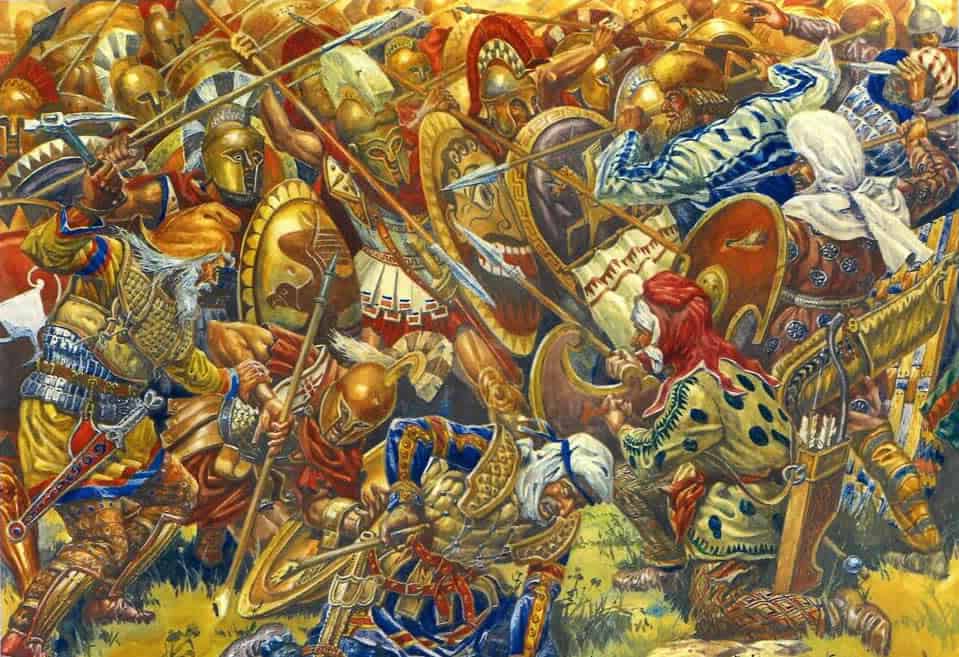
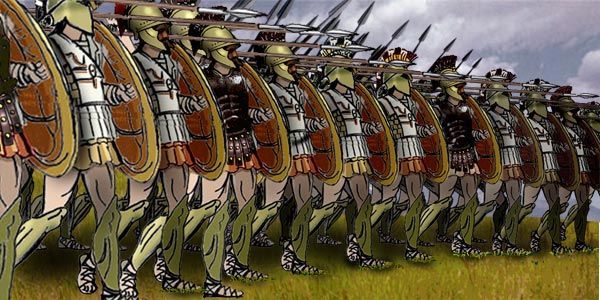


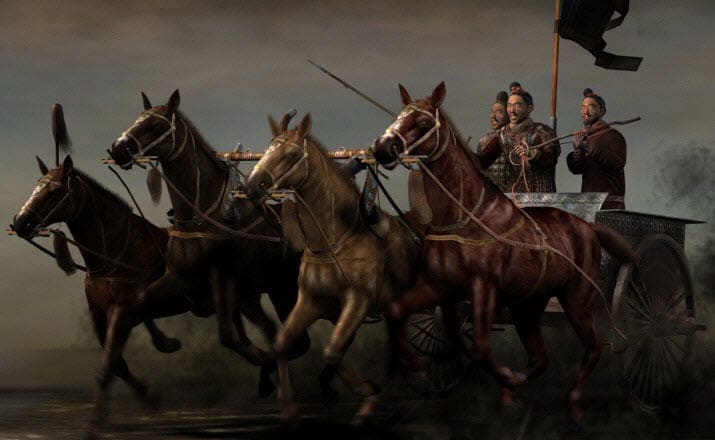
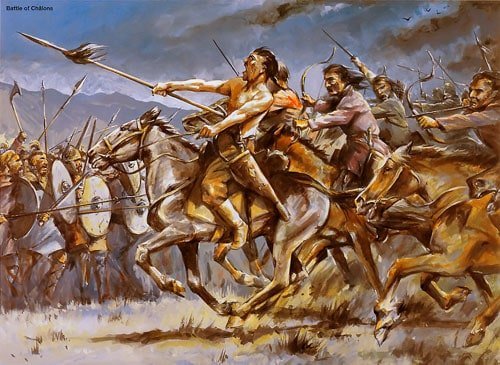
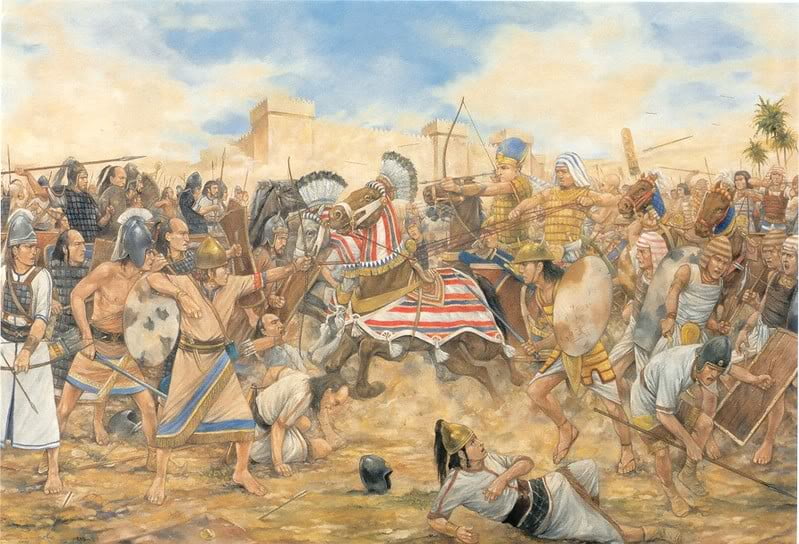
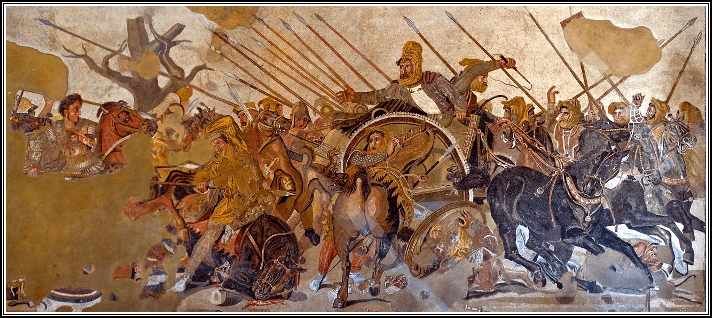

No comments:
Post a Comment